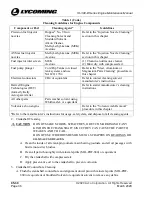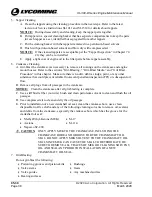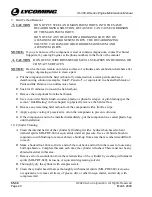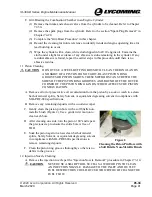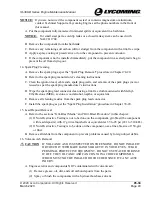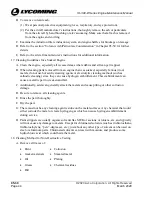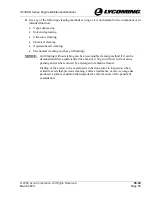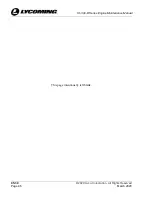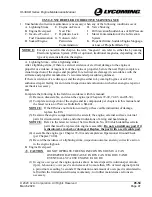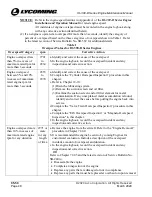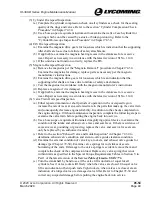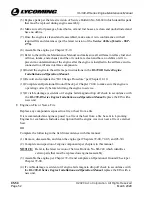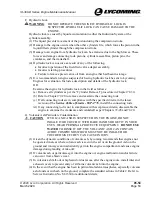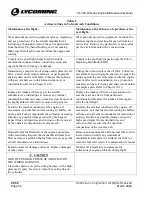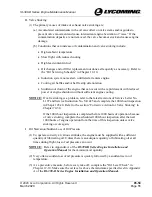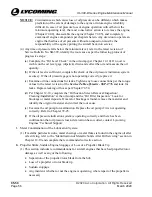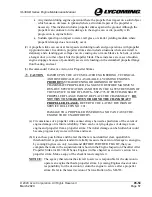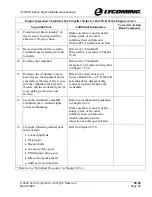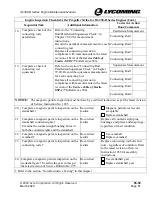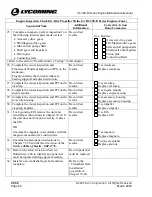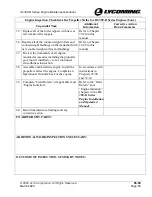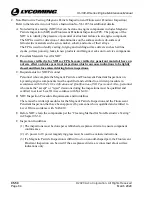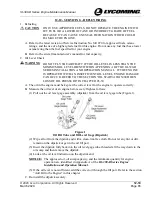
IO-390-D Series Engine Maintenance Manual
05-50
© 2020 Avco Corporation. All Rights Reserved
Page 50
March 2020
IO-390-D Series Engine Maintenance Manual
C.
Incorrect Fuel or Fuel Contamination
(1)
Refer to Appendix A in the
IO-390-D Series Engine Installation and Operation Manual
or the latest revision of Service Instruction No. SI-1070 for approved fuels, octane
ratings, and the use of a higher grade fuel for this engine.
CAUTION
ONLY USE APPROVED FUELS. DO NOT OPERATE THE ENGINE
WITH JET FUEL OR A LOWER OCTANE OR INCORRECT GRADE
OF FUEL. UNUSUAL DETONATION CAN OCCUR AND INCREASE
ENGINE TEMPERATURE AND PRESSURE WHICH CAN DAMAGE
THE ENGINE
(2)
Actual damage to the engine from incorrect fuel could be in a range from unnoticeable to
severe damage or failure. Primary damage to the engine caused by incorrect fuel occurs
in the combustion chambers. Tuliped intake valves and burnt pistons from excessive
cylinder head and oil temperatures are evidence of primary damage. If detonation has
been severe enough, further damage will occur to crank pins, main bearings,
counterweights, and valve train components. The extent of damage can vary accordingly
based on the duration of operation, engine power level and the type of fuel used.
(3)
Any mixture of unapproved fuels and additive materials that change the octane rating
from the specifications in Appendix A in the
IO-390-D Series Engine Installation and
Operation Manual
or the
latest revision of Service Instruction No. SI-1070 could be
harmful to the engine.
(4)
Because of many variables, it is impossible to be sure of the airworthiness of an engine
that has been operated with incorrect fuel - except by detailed inspection of the engine by
qualified personnel. Therefore, if the engine has been operated with incorrect fuel,
regardless of the power setting or time of operation, as per the latest revision of Service
Bulletin No. SB-398.
(a)
Do not continue flight and engine operation with incorrect fuel.
(b)
Drain the aircraft fuel system until all fuel tanks are empty in accordance with the
aircraft manufacturer’s installation.
(c)
If the aircraft manufacturer has a procedure for cleaning and/or purging the aircraft
fuel system after the use of incorrect fuel, follow the aircraft manufacturer’s
procedure. If there is no aircraft cleaning and/or purging procedure, service the
aircraft fuel tanks in accordance with the aircraft manufacturer’s instructions.
(d)
Remove the engine in accordance with the “Engine Removal Procedure” in Chapter
72-00.
(e)
It is recommended the engine be sent to Lycoming Engines for evaluation.
OR
Complete the following in the field in accordance with this manual:
1
Remove, disassemble, and clean the engine per Chapters 72-00, 72-05, and 05-30.
2
Complete an inspection of engine components per chapters in this manual.

